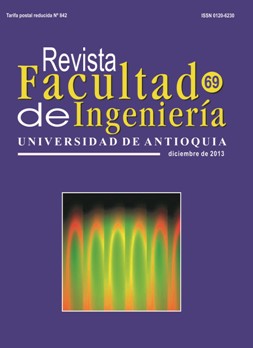Contextual dynamic of the software requirements elicitation
DOI:
https://doi.org/10.17533/udea.redin.18129Keywords:
software engineering, requirements engineering, software requirements model, requirements elicitation model, elicitation process attributesAbstract
The software requirements elicitation from stakeholders has been stated as a key activity influencing strongly on quality of specified requirements and, therefore, of the final development product. For this raison, is undoubtly the necessity to dispose clear guidelines to drive the interrelationship with the owners of the domain information and the needs that require solutions. This work focuses on the model of the elicitation considering the influence of the contextual agents of the process, such as: elicitor, who drive the activity; informant, who possess the relevant information; problem domain, characteristics of the problematic to tackle; and process, characteristics and restrictions of the activity itself. The article analyses the dynamic that relates these factors to select the technique to use in each elicitation session. Finally, the work contributes with a time model of the process and with the representation of the main casuistic of elicitation process.
Downloads
References
P. Loucopoulos, V. Karakostas. Systems Requirements Engineering. Ed. McGraw-Hill, Inc. New York, NY, USA. 1995. pp.19-23.
B. Boehm, R. McClean, D. Urfrig. “Some experience with automated aids to the design of large-scale reliable software”. IEEE Transactions on Software Engineering. Vol. SE-1. 1975. pp.125-133. Standish Standish Group. The CHAOS Report. Disponible en: http://www.projectsmart.co.uk/docs/chaos-report.pdf. Consultado en: octubre 2005. DOI: https://doi.org/10.1109/TSE.1975.6312826
B. Kovitz. Practical Software Requirements: A Manual of Content and Style. E.d. Manning Publications Co. Greenwich, CT, USA. 1998. pp. 28-29.
A. Davis, A. Hickey. “An Ontological Approach to Requirements Elicitation Technique Selection.” Ontologies in the Context of Information Systems. R. Sharman, R. Kishore, R. Ramesh, (eds). Ed. Kluwer Academic Publishers. Dordrecht, the Netherlands. 2007. pp. 403-431. DOI: https://doi.org/10.1007/978-0-387-37022-4_14
J. Dhaliwal, I. Benbazat. “A framework for the comparative evaluation of knowledge acquisition tools and techniques”. Knowledge-Acquisition. Vol. 2. 1990. pp. 145-166. DOI: https://doi.org/10.1016/S1042-8143(05)80009-3
M. Christel, K. Kang. Issues in Requirements Elicitation. Technical report. Carnegie Mellon Software Engineering Institute. Pittsburgh, PA, US. 1992. pp. 27-30. DOI: https://doi.org/10.21236/ADA258932
P. Chatzoglou, L. Macaulay. “Requirements capture and analysis: a planning model”. Information-&- Systems-Engineering. Vol. 1. 1995. pp. 271-87. DOI: https://doi.org/10.1007/BF01235903
D. Carrizo. Revisión de los Atributos Contextuales que influyen en la Selección de Técnicas de Educción de Requisitos. Jornadas Iberoamericanas de Ingeniería de Software y de Ingeniería del Conocimiento. Veracruz, México. 2006. pp. 253-260.
D. Carrizo, O. Dieste. Atributos Contextuales Relevantes para la Selección de Técnicas de Educción Requisitos. Jornadas Iberoamericanas de Ingeniería de Software y de Ingeniería del Conocimiento. Lima, Perú. 2007. pp. 143-149.
Downloads
Published
How to Cite
Issue
Section
License
Copyright (c) 2018 Revista Facultad de Ingeniería

This work is licensed under a Creative Commons Attribution-NonCommercial-ShareAlike 4.0 International License.
Revista Facultad de Ingeniería, Universidad de Antioquia is licensed under the Creative Commons Attribution BY-NC-SA 4.0 license. https://creativecommons.org/licenses/by-nc-sa/4.0/deed.en
You are free to:
Share — copy and redistribute the material in any medium or format
Adapt — remix, transform, and build upon the material
Under the following terms:
Attribution — You must give appropriate credit, provide a link to the license, and indicate if changes were made. You may do so in any reasonable manner, but not in any way that suggests the licensor endorses you or your use.
NonCommercial — You may not use the material for commercial purposes.
ShareAlike — If you remix, transform, or build upon the material, you must distribute your contributions under the same license as the original.
The material published in the journal can be distributed, copied and exhibited by third parties if the respective credits are given to the journal. No commercial benefit can be obtained and derivative works must be under the same license terms as the original work.










 Twitter
Twitter